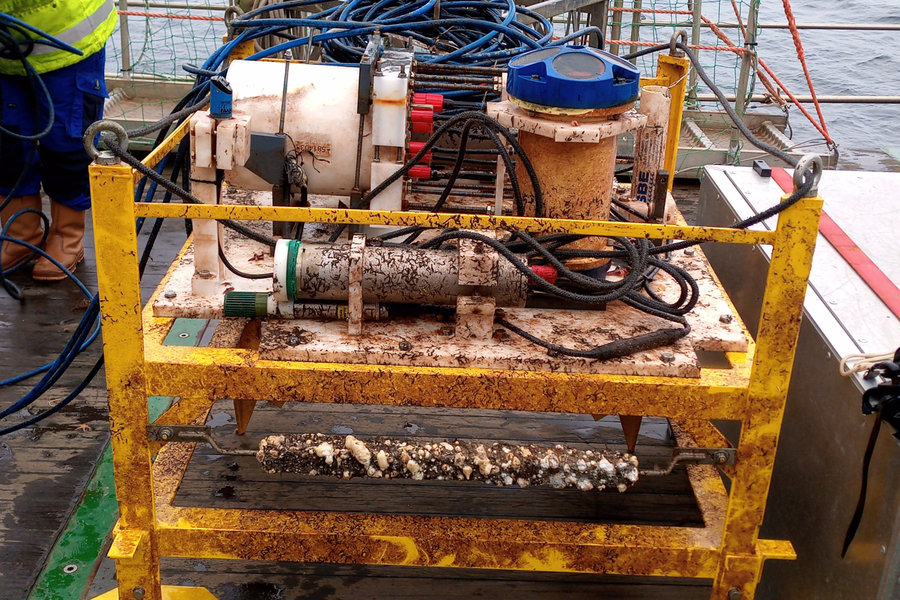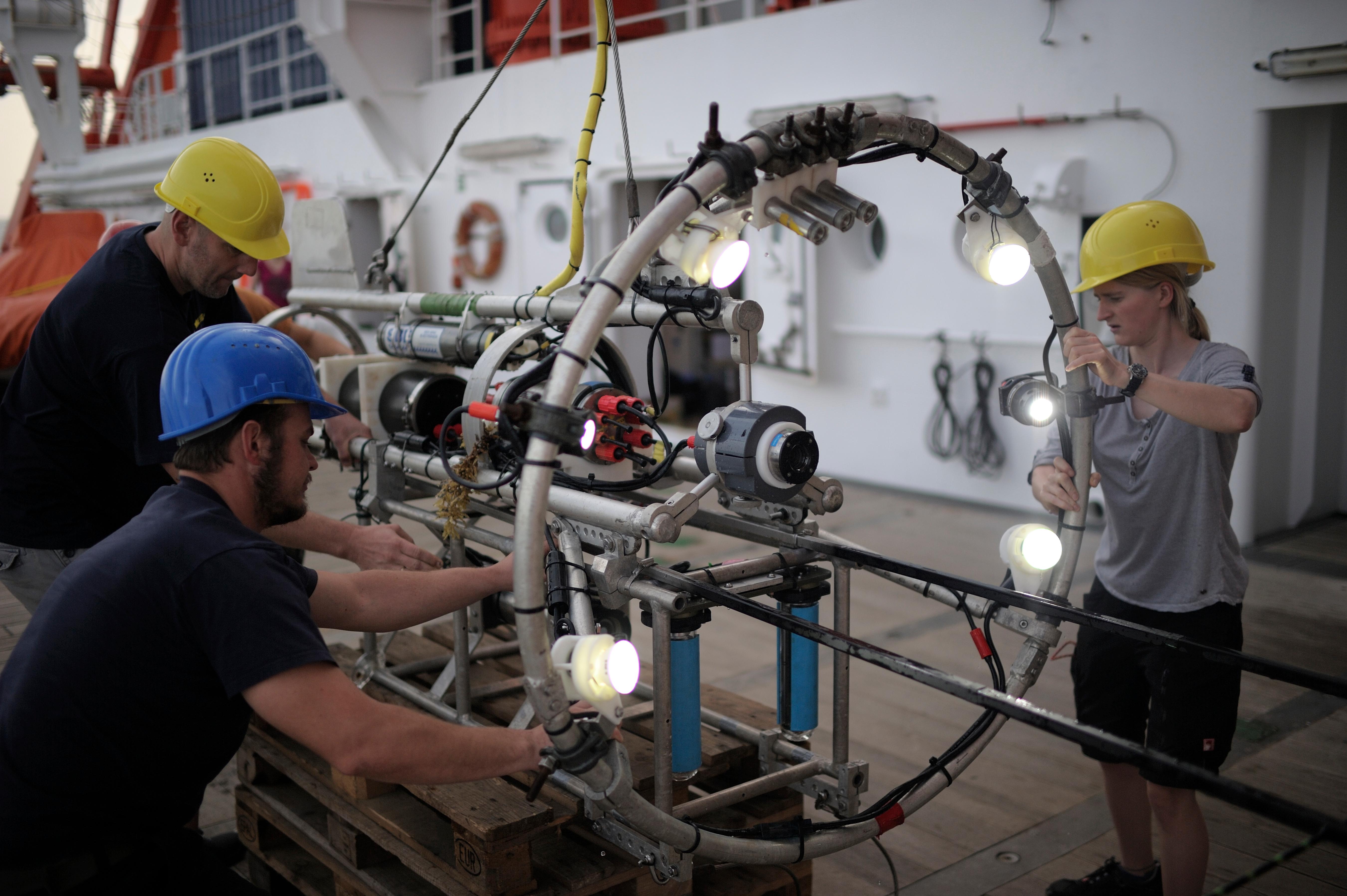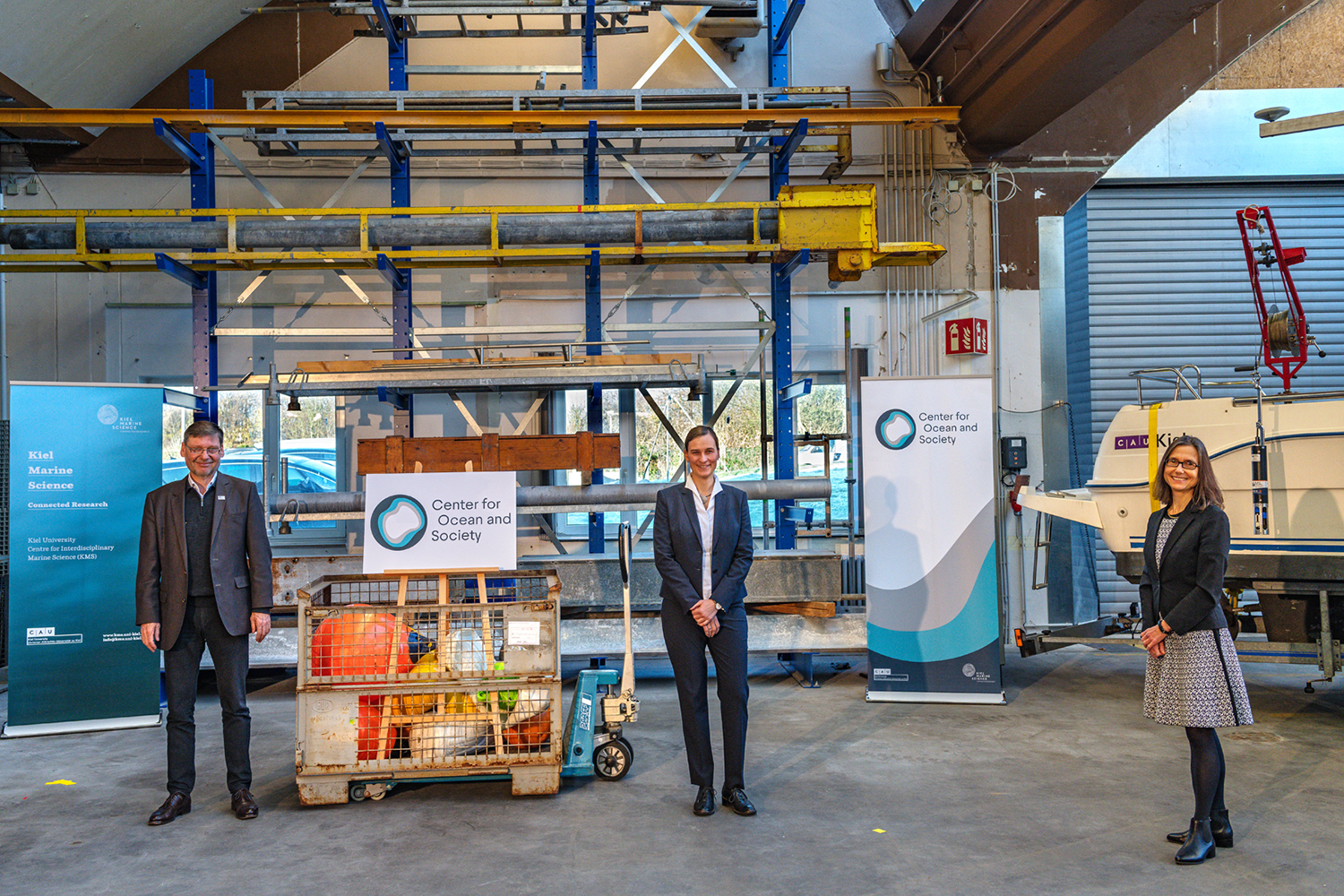The news of this loss literally went around the world. On 21 August 2019, a scientific underwater observatory consisting of two desk-sized racks disappeared from its position at the exit of Eckernförde Bay in the Baltic Sea. With the observatory, which is known as the Boknis-Eck node, the GEOMAR Helmholtz Centre for Ocean Research Kiel and the Helmholtz-Zentrum Geesthacht Centre for Materials and Coastal Research (HZG) continuously collected environmental data such as temperature, salinity, oxygen or methane concentrations directly at the seafloor. One of the two racks was equipped with the sensors and the second provided the power supply via a cable from the seashore.
The BSH's VWFS DENEB has now located and recovered one of the racks almost 200 meters northeast of its original position. "200 meters doesn't sound like a lot", says Martin Steen, who is responsible for Boknis Eck as a technician at GEOMAR and was on board the DENEB during the search trip last weekend. "But due to the low visibility in the Baltic Sea, it's already a needle in a haystack. Especially since a drag mark on the seabed, which we had discovered during previous trips with the research vessel ALKOR, had initially led our search in the exact opposite direction".
The piece of the frame that was recovered is the section of the observatory equipped with sensors. Although the frame is in relatively good condition, the sensors are badly damaged or missing. "Since our insurance company has already paid for the damage, we have to clarify with them what will happen to the frame now", explains Prof. Dr. Hermann Bange from GEOMAR, scientific coordinator of the Boknis Eck observatory.
It is still unclear how the rack was moved from its original position to the location where it was found. Also unknown is the whereabouts of the second rack. "We discovered other suspicious points with the echo sounders of the DENEB. But they have proven to be false", says Martin Steen.
The technician expressly thanks his colleagues at the BSH for their help. "We had actually already given up the search. Nevertheless, we were very pleased with the offer of our colleagues at BSH. And the cooperation on board was extremely good," stresses Steen.
The news of the mysterious disappearance of the devices made headlines worldwide in 2019 and provoked numerous reactions in the social media. "It was fascinating to see how many people were interested in the search," says Hermann Bange.
Since the end of 2016, the Boknis Eck underwater node had supplemented the so-called Boknis Eck time series station, at which environmental data have been collected every month since 1957. These data help to monitor the state of the ecosystem of the southwestern Baltic Sea. Boknis Eck is one of the oldest, still active marine time series worldwide.
The node was also part of the COSYNA (Coastal Observing System for Northern and Arctic Seas) monitoring network of the HZG. "The instruments were especially placed in a restricted area. We hope that in the future all seafarers and pleasure boaters will follow the rules and respect the restricted area so that new devices can work undisturbed", Professor Hermann Bange appeals
Contact
Jan Steffen (GEOMAR, Communication and Media)
Tel.: +49 431 600-2811
presse@geomar.de
…



